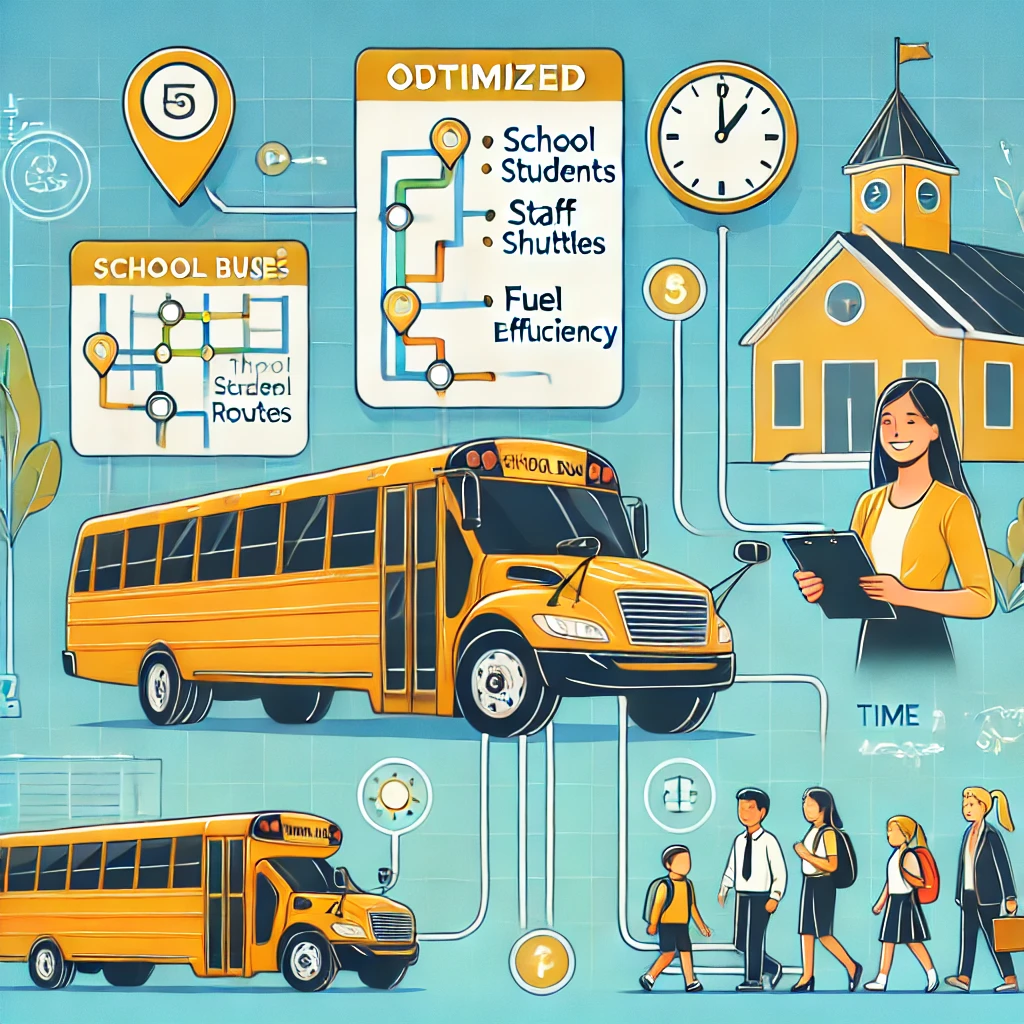
The Importance of Route Optimization for Employee and Student Transportation Services
- 15 Jan 2025
The Importance of Route Optimization for Employee and Student Transportation Services
Employee and student transportation services hold a significant place in daily commuting solutions. These systems pick up individuals from different addresses and ensure they reach their workplaces or educational institutions on time. However, for these operations to be carried out effectively, route planning must be done carefully. Vehicle route optimization technologies play a critical role in reducing costs, saving fuel, and increasing passenger satisfaction.
In this article, we will detail how transportation service companies can implement strategies to keep operational costs under control and use their resources more efficiently.
Challenges in Managing Transportation Services
Transportation systems are often complex, and lack of proper planning can lead to serious issues. Here are the main challenges faced in these operations:
- Fuel Consumption and Rising Costs
Poorly planned routes cause unnecessary travel distances, significantly increasing fuel costs. - Time Loss
In high-traffic areas, unoptimized routes can cause transportation services to run late. This wastes time for both employers and passengers. - Inefficiency in Resource Utilization
Failure to coordinate multiple vehicles serving the same region can lead to inefficient use of company resources. - Low Customer Satisfaction
Disorganized and unplanned service routes fail to meet the expectations of students and employees, which can damage the company’s reputation.
Benefits of Route Optimization
Using route optimization in transportation vehicle operations provides effective solutions to the issues mentioned above. Here are the main advantages of these technologies:
- Reducing Fuel Consumption
Optimized routes ensure that each vehicle follows the shortest and most efficient path, minimizing fuel consumption. - Time Savings
Dynamic routes technology takes into account factors such as traffic conditions and weather to prevent delays and save more time. - Resource Efficiency
Territory management systems optimize service areas, ensuring that resources are used more effectively. - Customer Satisfaction
Customer satisfaction increases with timely and well-organized transportation. Route optimization enhances the passenger experience.
The Role of Dynaroute
Dynaroute provides a comprehensive route planning solution for transportation companies, reducing operational costs and increasing efficiency.
- AI-Powered Planning
Artificial intelligence technology optimizes each vehicle’s route and offers the fastest path options. - Real-Time Tracking
GPS tracking and geofencing technologies enable real-time monitoring of transportation services. This enhances operational control and prevents delays. - Flexible and Dynamic Structure
Dynamic routes adapt to changing traffic conditions, allowing routes to be instantly re-planned.
Economic Benefits of Route Optimization
- Cost Reduction
Optimized routes lower overall costs by reducing fuel consumption and minimizing the need for additional personnel. - Fewer Vehicles on the Road
Without proper planning, more vehicles than necessary are deployed. Route optimization eliminates this issue. - Time and Workforce Efficiency
Schedule optimization ensures that employee work hours are effectively managed, increasing company-wide efficiency.
Conclusion
For transportation service companies, route optimization is one of the most effective ways to reduce costs and improve service quality. Advanced software like Dynaroute enhances logistics processes, providing a significant competitive advantage for businesses. By leveraging innovative solutions such as vehicle route optimization and route management, companies can reduce operational costs while increasing customer satisfaction.